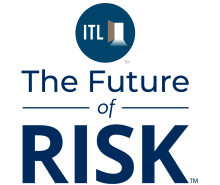My introduction to psychology came in high school when my best friend's mother earned a PhD in the field and began writing a syndicated newspaper column that led to a talk show on Pittsburgh radio. Sam snickered at the notion that anyone would take advice from his mom but wound up on her show as a reluctant guest some years later. The plan was for her to opine about one thing or another while drawing on his experiences as a scuba instructor at various Club Meds during his summers while in medical school. She invented a French last name for him to hide their connection, then ambushed him by quizzing him about his sex life with the tourists.
I howled as I listened to him squirm, knowing just how much he wanted to scream, "Mom, leave me alone!" as I'd heard him do so many times over the years.
Suffice it to say that, in the face of Sam's mom's very public efforts to use her degree to build an audience, neither of us took the field of psychology seriously at the time. But I've learned a thing or two over the decades, now follow developments in the field and recently saw a study on the use of AI that, while plenty interesting on its own terms, could also have broad implications for how insurers can use chatbots to take better care of customers.
An article in the MIT Technology Review describes an eight-week clinical trial with 210 participants, about half of whom had access to an AI called Therabot and half of whom participated in traditional psychotherapy. As reported in a journal of the New England Journal of Medicine, those suffering from depression experienced a 51% reduction in symptoms from interacting with the AI, which participants did on average through 10 messages a day.
"Those with anxiety experienced a 31% reduction, and those at risk for eating disorders saw a 19% reduction in concerns about body image and weight," the article said. "These measurements are based on self-reporting through surveys, a method that’s not perfect but remains one of the best tools researchers have.
"These results, [the study's lead author] says, are about what one finds in randomized control trials of psychotherapy with 16 hours of human-provided treatment, but the Therabot trial accomplished it in about half the time. 'I’ve been working in digital therapeutics for a long time, and I’ve never seen levels of engagement that are prolonged and sustained at this level,' he says."
As you can imagine, the study comes with a bazillion caveats, and not just the usual ones about how clinical trials don't necessarily translate into the real world. The big issue is not just that it's hard to duplicate a therapist-patient relationship in software but that an AI that commits missteps in providing therapy can cause real harm.
A New York Times article warns about "two teenagers who had consulted with 'psychologists' on Character.AI, an app that allows users to create fictional A.I. characters or chat with characters created by others. In one case, a 14-year-old boy in Florida died by suicide after interacting with a character claiming to be a licensed therapist. In another, a 17-year-old boy with autism in Texas grew hostile and violent toward his parents during a period when he corresponded with a chatbot that claimed to be a psychologist. Both boys’ parents have filed lawsuits against the company."
But insurers can still take heart from the progress that Therabot represents and can use the study to start to see more clearly where the benefits will be for customer service in insurance.
An attempt to build an AI therapist as an "expert system" flopped in the 1960s, but the Therabot researchers saw another opportunity as the language models that now underpin generative AI began to take shape. They experimented with what raw material to use to train the AI, starting with general mental-health conversations pulled from internet forums, then turning to thousands of hours of transcripts of real therapy sessions. The AI's advice based on those inputs was too bland, so the researchers created their own data based on best practices.
That's more or less what I see happening with customer service bots in insurance. There's lots of experimentation with what data to feed them, what things to allow them to say on which topics, and what tone they should adopt.
The fact that the Therabot researchers seem to have found a good balance for tone and information on an even trickier subject suggests that the work in insurance will pay off, too, and sooner rather than later.
There's already been considerable progress. The Wall Street Journal recently ran a piece saying Allstate has found that its AI is more empathetic than a lot of its agents. The article wasn't describing a chatbot. Rather, the piece was about an AI that generates just about all the 50,000 communications the company sends out daily (after review by a human representative) to people with claims. But what Allstate is doing now is just a waystation toward having those AI-driven communications happen in real time.
As the Therabot and Allstate show, the benefits of chatbots are primarily showing up in two areas: reach/frequency and consistency of tone.
With the Therabot, the big advance is both in terms of reach and its close cousin, frequency. Fewer than half of people with a mental disorder are getting treatment, and those who do may see a therapist 45 minutes a week. But a bot can be made available to anybody with a smartphone at almost zero marginal cost. A bot can also interact with people as often as they like, at any hour of the day or night.
With Allstate and other insurers, the benefit from the customer's viewpoint is more in terms of frequency. If an AI can handle communication, then it can check in with the customer often to see if any frustrations are building, can solicit and answer questions and can send any number of other communications that a rep/agent would want to send under the best of circumstances but just doesn't have the time for.
Consistency of tone isn't something that popped to mind right away as I started thinking about the benefits of bots years ago, but it's emerged as a big plus, and that makes total sense. We humans are affected by how we slept the night before, by the time of day, by too much or too little caffeine. We may be fine the first five times customers ask the same dumb question, but we eventually get annoyed. We tend toward jargon as we become more expert. But AI never changes. It can answer the same dumb question for weeks on end and not switch its tone no matter how many times a customer yells at it.
The WSJ article says Allstate found particular benefit in cutting out jargon. Its AI doesn't talk about first notice of loss; it talks about initiating a claim. The AI doesn't talk about UPP; it spells out the acronym as "unscheduled personal property."
I can't imagine many outside the industry know that "unscheduled" refers to property that isn't itemized on a list, but the AI is at least heading in the right direction. And the great thing about AI, as opposed to a human workforce is that you can make a change and have it happen instantly and everywhere. Complete consistency. No memos or retraining required.
Now tell me about your relationship with your parents....
Cheers,
Paul
P.S. Here's a fun video of what a lot of future communication may look and sound like. It shows two AI agents talking to each other, realizing that they're both AI and dispensing with human language.


